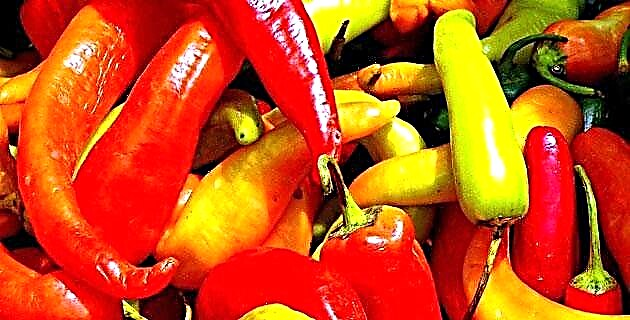
The chili is native to Mexico, Central and South America. Learn more about it!
The name comes from Nahuatl, chilli and is applied to numerous varieties and forms of the annual herbaceous or sub-shrub plant Capsicum annum, of the Solanaceae family, although some correspond to the perennial shrub species C. frutescens.
In general it reaches 30 to 80 cm in height. The stem is erect, branchy and smooth.
The leaves are simple, alternate, generally ovate, whole, smooth, glossy, short or long petiolate, 5 to 12 cm long.
The flowers are hermaphroditic, axillary, solitary, pedunculated, actinomorphic, rotated or subroutine, white, greenish or purple; the calyx is short, generally pentalobulated; the corolla is made up of five welded petals that can be distinguished by the five peripheral lobes; the androecium consists of five short stamens inserted in the throat of the corolla; the ovary is supero, bilocular or tetralocular, with pluviovulate locules, and is superimposed by a simple style.
The fruit, also called chili, is an erect or pendulous indehiscent plant, incompletely bilocular or trilocular, of variable shape and size, sweet or pungent, red or orange when ripe and green, white or purple when immature; It contains numerous small reniform seeds, which, together with the placentas (veins) that attach them to the wall of the fruit, contain a higher proportion of oleoresin or a spicy substance called capsaicin.
CHILE IN MEXICAN GASTRONOMY
Chili in Mexico is essential to give flavor to any dish and is, without a doubt, the national condiment par excellence. In Mexico, more than a hundred types of chili are known, "the pepper of this land" as Sahagún called it.
The chili provokes sensations in taste that cannot be classified as sweet or salty, but simply as spicy. The stinging in the mouth, which modifies and sometimes even predominates over other flavors, is what gives reason for being to dishes as typical as mole, tinga, taco sauce and the indispensable enchiladas.
But on the other hand, chili has unique properties: it is a natural stimulant, it is also capable of curing certain pains - scientists say that because it releases its own opiates in the brain - it is highly effective in coping with the "hangover", It awakens the appetite, reduces the effects of the flu, helps to eliminate toxins (because it makes you sweat) and, there is even the belief that, when smeared, it causes hair to come out of bald people, it disappears pimples from the eyes and even eliminates the spell of the "evil eye".
However, what is true is that chili contains significant amounts of vitamin C and various minerals essential for good nutrition.











